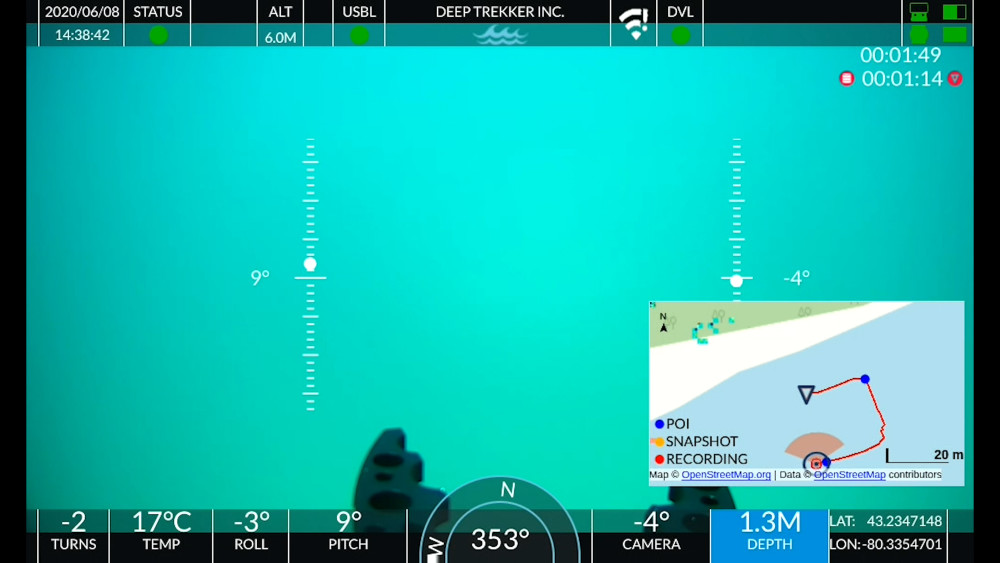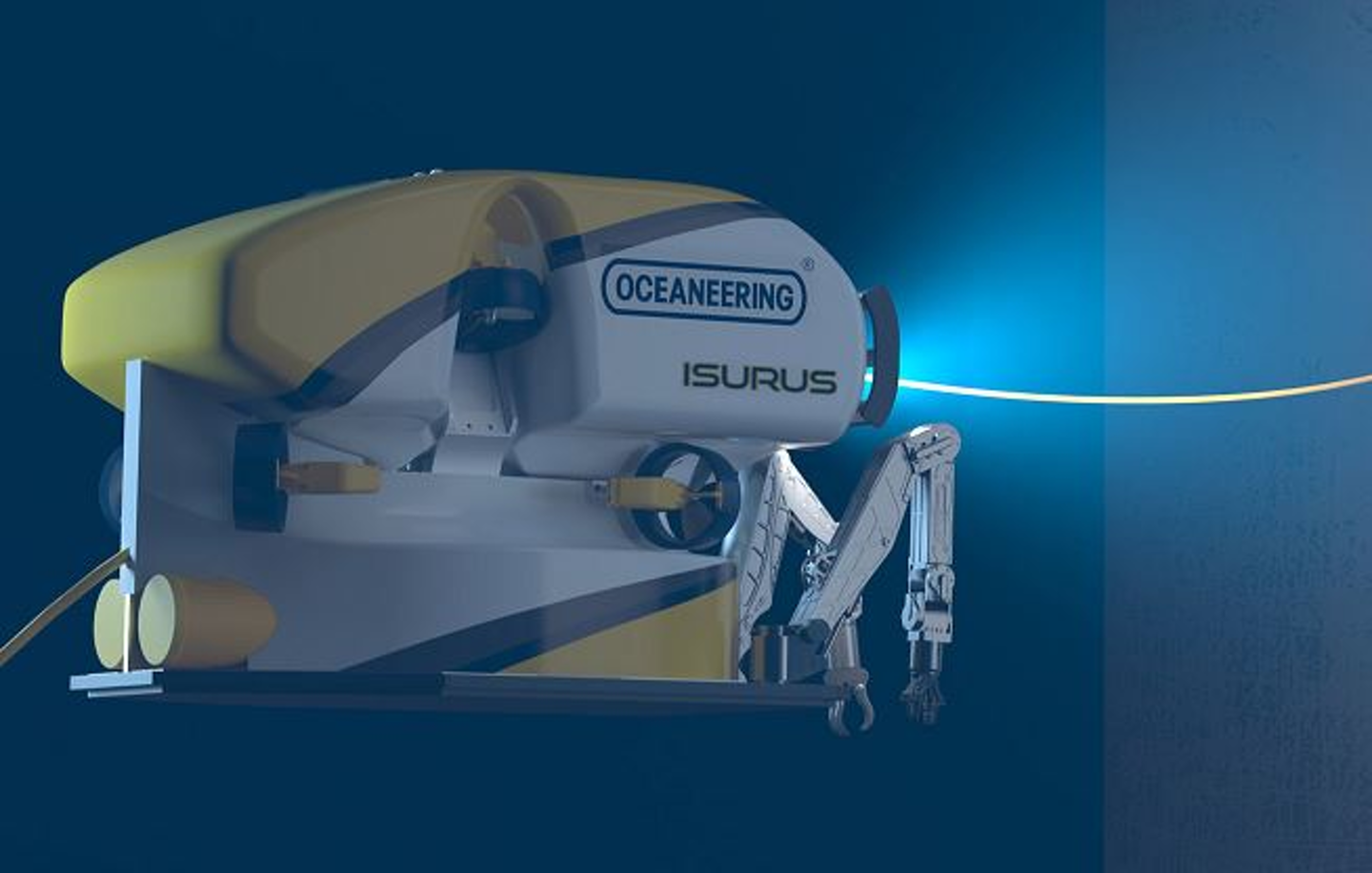Home › Forums › ROV › ROV Technical Discussions › Cygnus Wall Thickness Reading
- This topic has 12 replies, 3 voices, and was last updated 15 years, 3 months ago by
James McLauchlan.
-
AuthorPosts
-
September 11, 2009 at 7:47 am #2930
RovMac
ParticipantHi All Im looking for some info on the above, specifically;
How succesfully has anyone used it?
Whats the timescale for indidual reading?
Is the stability of the sub an issue?
Does the member have to be 100% clean for good readings?Any info kindly accepted
Cheers
September 11, 2009 at 10:50 am #24622James McLauchlan
ParticipantAs a diver I used the Cygnus 1 for many years. Very solid bit of gear. The Cygnus ROV systems are built on the same technology but housed in ROV mountable pressure vessels.
For ROV applications there is the the Cygnus ROV MiniROV mountable for Mini ROV’s rated to 500m ……….and the Cygnus ROV mountable available in -1000m and -3000m pressure vessels.
Cygnus have an ROV probe mounting solution available also.
Yes, the vehicle needs to be relatively stable but, as the system will give you a reading in a second or so, quite quick to get results.
The Cygnus system will read through coatings so no nead to chip or wire brush the protective coating off.
When in water, the probe face doesn’t have to be in direct contact with the surface to be measured but it does have to be in very close proximity.
Hard or thick soft marine growth would need to be cleaned off though.Cygnus instruments use a single crystal probe for all their applications. Not to be confused with the cheaper ‘twin probe’ systems being sold out of China.
The single crystal multiple echo technique for measurement is the method of choice by shipping and offshore regulatory bodies such as Lloyds and DNV.
You can find more information, and downloadable datasheets, on our website at http://www.rovworld.eu
September 11, 2009 at 10:55 am #24623Andy Shiers
ParticipantHow succesfully has anyone used it? Very Successful
Whats the timescale for indidual reading? minute , maybe longer but close to splash zone , a pain in the pervervbial Arse ! Needs to be dead calm or even better , get a Bio-degradable to do it instead 😀
Is the stability of the sub an issue? Yes or a decent pilot 😀
Does the member have to be 100% clean for good readings? Yes
I have used it on Spools with a Tiger but the diver had cleaned it down to bare metal first and Just came off a job using it with a Queersar , Rub with the left , readings with the right , Make sure a frame is in position on front of ROV for stability ( Up against )
8)September 11, 2009 at 11:01 am #24624Andy Shiers
ParticipantThe Cygnus system will read through coatings so no nead to chip or wire brush the protective coating off.
When in water, the probe face doesn’t have to be in direct contact with the surface to be measured but it does have to be in very close proximity.Usually the Oil Rep will give the Metal thickness spec’ for that area but it usually gives metal thickness and not the added paint thickness, And this is where the arguments come in regards to accuracy 😕
When I had to take readings on the spools , they were brand new fresh in the water and I couldn’t help thinking ……………………… What an absolutely pointless episode it was 😯September 11, 2009 at 11:06 am #24625James McLauchlan
ParticipantI’m going to have to differ in opinion with a couple of comments there.
Whats the timescale for indidual reading? minute , maybe longer
A second, maybe a couple od seconds max. If it takes longer than that then it’s down to the way the probe is being asked to try and read the surface to be measured. Probe angle /distance from target etc.
Does the member have to be 100% clean for good readings? Yes
The surface does not have to be cleaned to bare metal. Readings can be taken quite successfully through coatings or very light soft marine growth.
September 11, 2009 at 11:54 am #24626Andy Shiers
ParticipantThe surface does not have to be cleaned to bare metal. Readings can be taken quite successfully through coatings or very light soft marine growth.
As long as the surface is smooth , I agree
A second, maybe a couple od seconds max. If it takes longer than that then it’s down to the way the probe is being asked to try and read the surface to be measured. Probe angle /distance from target etc.
As long as the surface is smooth and not badly pitted. I have also used it as a diver and it was a pain in the arse to get a good reading exceptable to the client …….. Because the surface was badly pitted.
With the ROV a "Gimble" with a spring loader on it is the norm , Or else the membrane gets chewed along with the plastic end 😯
This is also subject to the Field engineer putting a spanner in the works by requesting bare metal ( Which has been the case in the past ) Despite the fact that arguing taking off the paint which is protecting it creates more problems in the future 😕September 12, 2009 at 1:02 pm #24627James McLauchlan
ParticipantWith the ROV a "Gimble" with a spring loader on it is the norm , Or else the membrane gets chewed along with the plastic end 😯
This is also subject to the Field engineer putting a spanner in the works by requesting bare metal ( Which has been the case in the past ) Despite the fact that arguing taking off the paint which is protecting it creates more problems in the future 😕Agreed :tup:
FYI The spring loaded unit is the route Cygnus have taken.
September 12, 2009 at 7:40 pm #24628Andy Shiers
ParticipantHave Cygnus actually come up with their own Gimble ? 😯
September 14, 2009 at 1:04 pm #24629James McLauchlan
ParticipantCygnus now have three new different probe handling solutions being trialled as I write this.
As appointed Cygnus distributors ROVworld Lda has direct contact with Cygnus and is able to keep you appraised of newly developed ROV solutions as they are released to the open domain.
On probe deployment solutions there is one for work-class ROVs (about to be trialled in the Far East) and there are two solutions for small, inspection ROVs – one for hull surveys (being trialled in UK and already proving to be very effective) and one for general use.
If you require more information on this please contact us through our website at: http://www.rovworld.eu/en/contact.html
September 15, 2009 at 8:28 am #24630RovMac
ParticipantThanks for the info James/Lost!
I had used Cygnus eqpt last year unsuccessfully, but it seems the technology has moved on now. Problem we had was maintaining contact for 30sec (spec’d by the project eng’r) but now it seems readings can be taken from 5-10mm away from member. That was our main concern this time, and this time we have a more stable sub.Much appreciated guys!!
Keep up the good work 😀September 15, 2009 at 10:58 am #24631James McLauchlan
ParticipantI feel that the 30 sec per site (spec’d by your project engr) is way over the top….
From Cygnus’s website:
With MULTIPLE ECHO, measurements of the time delay between any three consecutive back wall echoes are taken. This means the coating thickness – up to 6 mm (and up to 20 mm using our ‘Deep Coat’ mode) – is completely ignored. The gauge does not need to be zeroed or calibrated at switch on. And because these time delays must match before a measurement is displayed, the gauge has automatically verified that the reading given is a TRUE MEASUREMENT.
Reading Validity
No matter if the probe is in direct contact or not the unit will only display the front wall to back wall thickness and ignore the ‘couplant’ gap (in this case seawater) or coating thickness. Sometimes readings may not come easily but once you have a reading it is is a true measurement. The results are repeatable, so there is no need to hang on for 30 seconds taking multiple readings.Calibration settings – velocity of material being measured
Once the unit has been calibrated to the velocity of sound for the material being measured there is no need to re-calibrated each time the unit it turned on and off as the settings are stored in memory. The only time you would need to re-calibrate would be if you were to switch the type of material being measured. Offshore (sub-sea) this is very rare.My experience shows that you are more likely to get a reading more quickly when in direct contact with the surface and if the surface is free of hard and soft marine growth ( a thin layer of compressible soft marine growth is normally OK). You will get readings with a small water gap between the probe and the metal surface. An even protective coating (0-6mm) will not significantly hinder the ability to take readings. But any reading displayed should be acceptable to the client simply because because of the way multiple echo technology works.
September 15, 2009 at 11:21 am #24632RovMac
ParticipantI agree, Try telling them that 🙄
Cheers again
September 15, 2009 at 12:06 pm #24633James McLauchlan
ParticipantJust edited my original post to clarify the situation a little.
-
AuthorPosts
- You must be logged in to reply to this topic.



